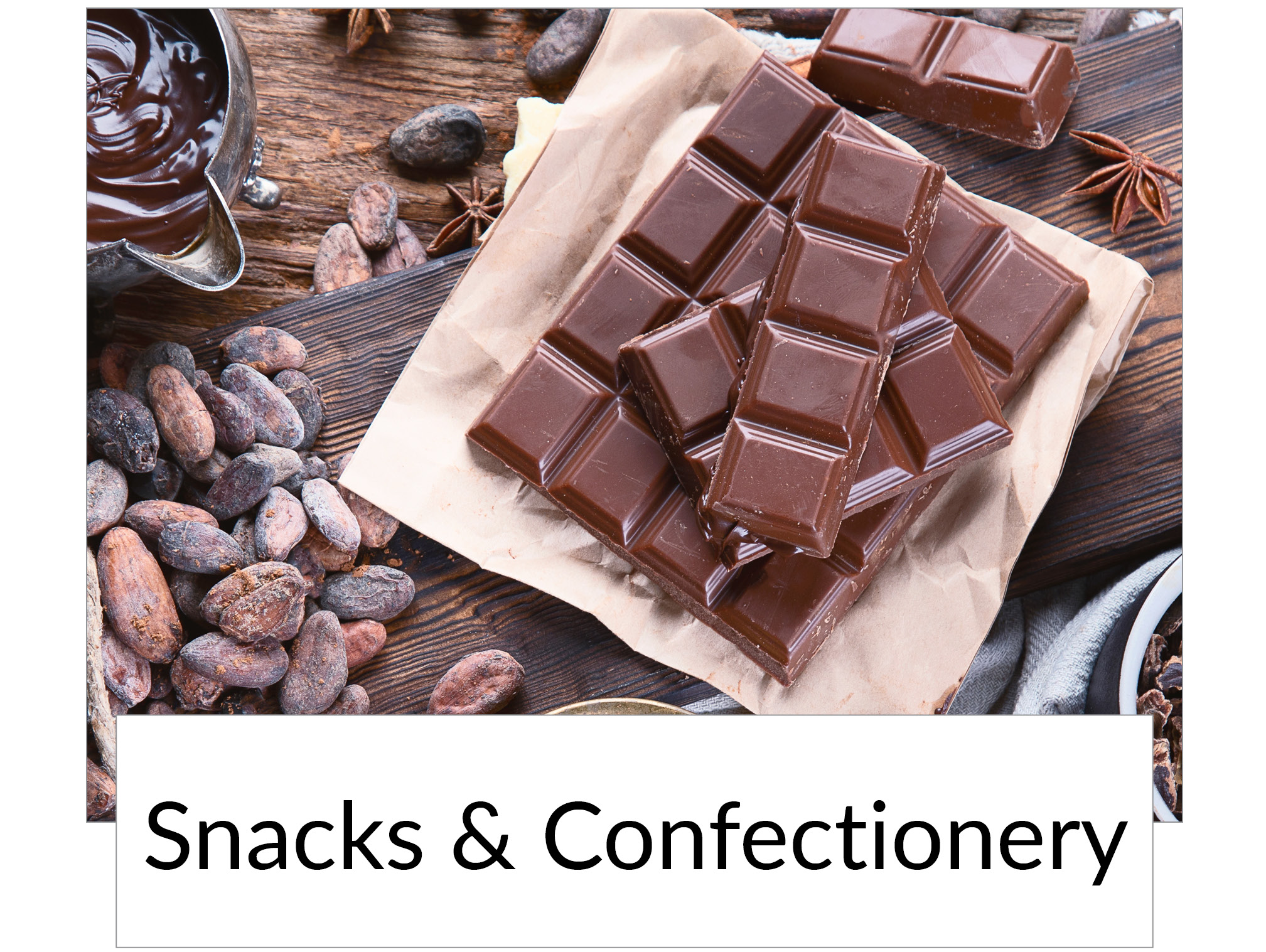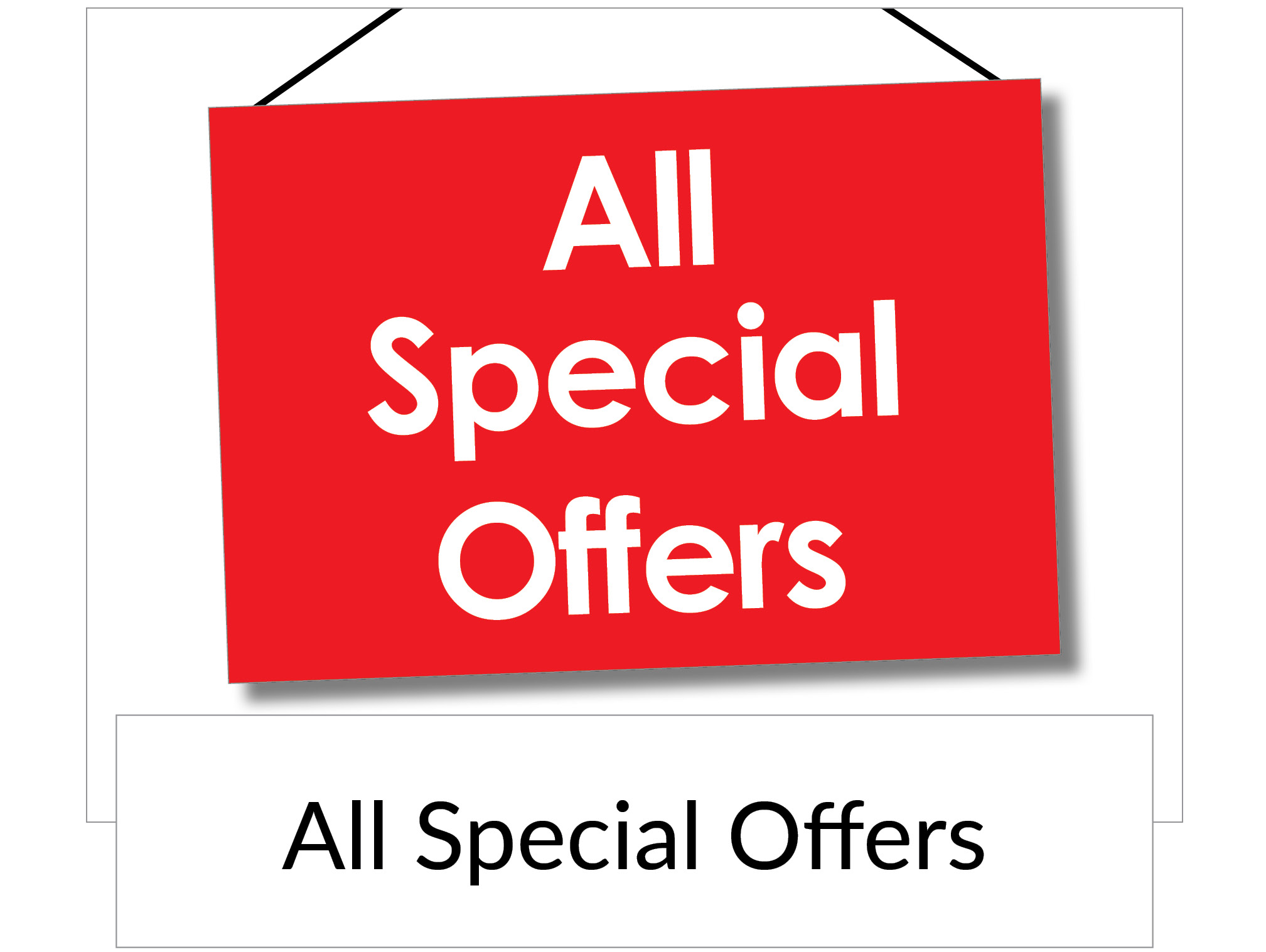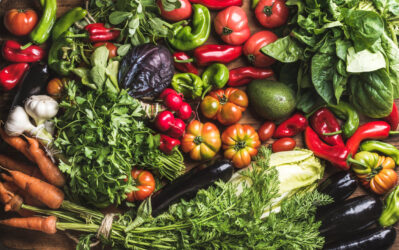
Fresh vegetables are the cornerstone of a healthy diet and the spring and summer seasons are a time when they are in abundance. From asparagus to kohlrabi and runner beans to tomatoes, there’s a huge variety to choose from. Make sure you eat the rainbow by including plenty of these delicious seasonal fresh vegetables in your diet. And if you need some recipe inspiration, Real Foods has that too!
Asparagus
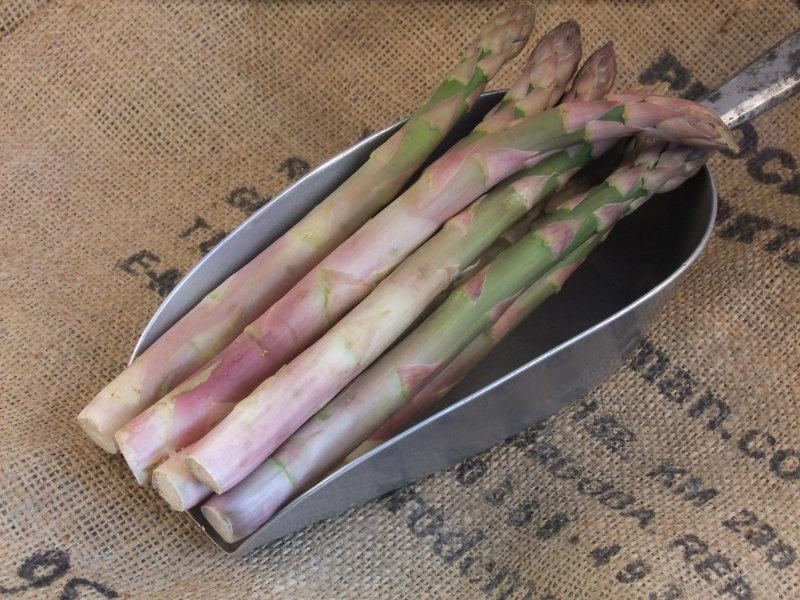
Asparagus is a flowering perennial that comes into season from the end of April until June. This bright green vegetable has a slightly sweet, nutty flavour and is packed with nutrients. According to British Asparagus, this quintessentially spring veggie encourages the growth of healthy bacteria in the large intestine. It can therefore help to reduce bloating.
Asparagus contains vitamin K, which is important for healthy blood clotting. It is also a good source of vitamin C, which supports the immune system. Asparagus can act as a natural diuretic, helping with detoxification.
This versatile vegetable can be boiled, steamed, sautéed, roasted or grilled. For a quick, tasty and filling lunch, try this Asparagus and Shallot Sunny Side Up Eggs Recipe.
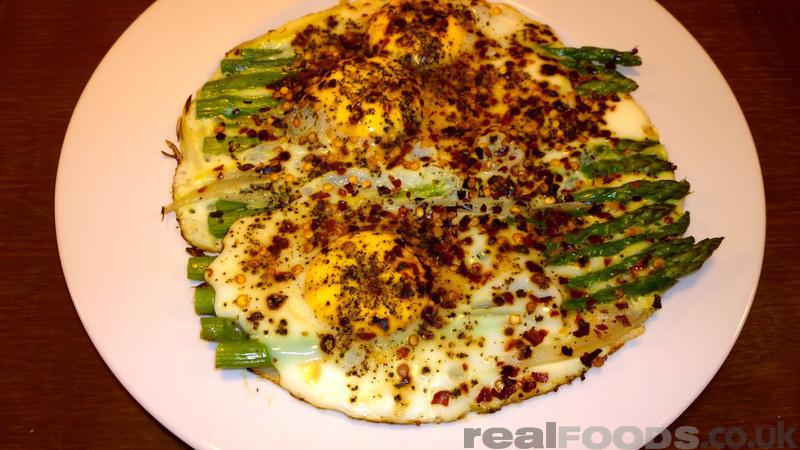
Jersey Royal potatoes
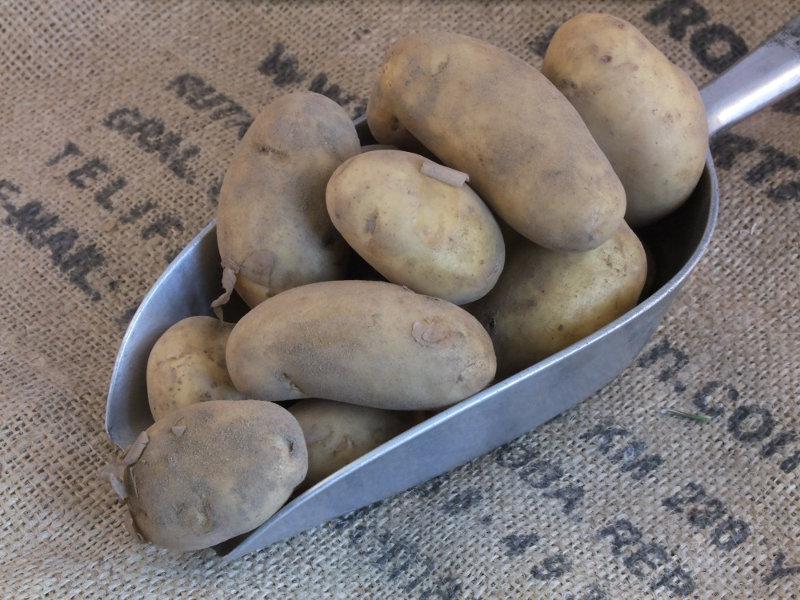
The Jersey Royal potato is not just your everyday spud. This special potato has Protected Designation of Origin (PDO) status, which means that only potatoes grown in Jersey can be called ‘Jersey Royals’. They have been grown on Jersey since 1878 and are harvested from the end of March through to July.
Potatoes are a rich source of vitamin C, especially the skins. Did you know that 100g of Jersey Royal new potatoes provides you with 25 per cent of the RDA for vitamin C? They are also rich in vitamin B and fibre.
Potatoes are traditionally boiled, roasted or fried, but if you feel like being inventive, you can combine them with eggs and flour to make brownies! For a delicious light lunch recipe, try this flavourful salad made from Jersey Royals with spiced poached pears and Roquefort.
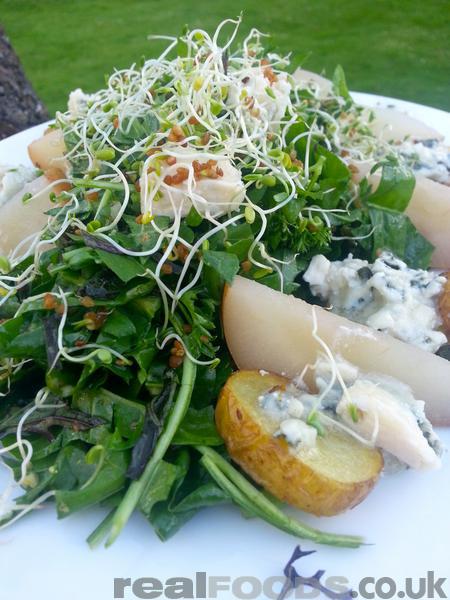
Broad beans
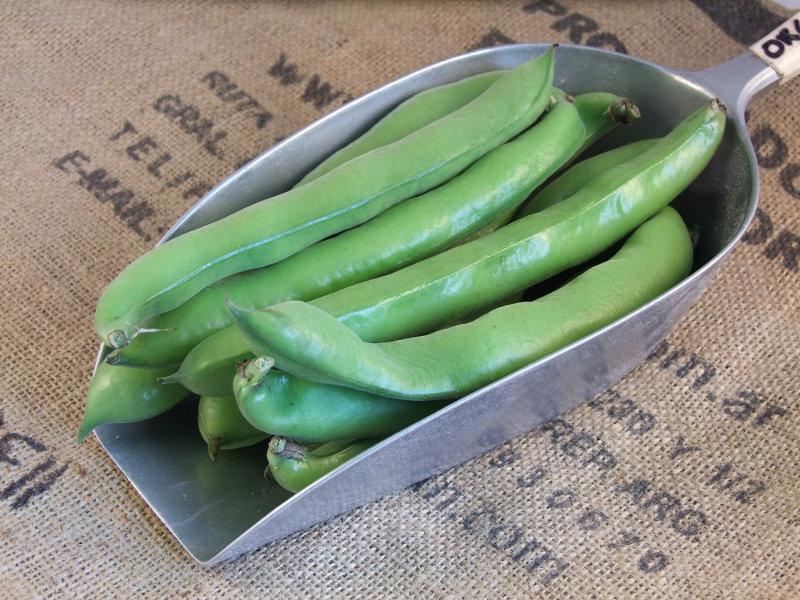
Broad beans (or fava beans as they are known in the US), are a member of the legume family. According to archaeological evidence, they were one of the first foods grown by man and a nutritional staple throughout the Middle Ages.
Broad beans are a great source of protein, dietary fibre, folate and B vitamins. They are also rich in isoflavones, which studies show may increase the body’s level of antioxidants and help support cellular health.
These kidney-shaped beans are in season from late May to early September. They work particularly well in summery salads along with other fresh vegetables and can be blended into a tasty dip or simply served as a side dish. They have a lovely creamy texture which really comes to the fore in this fresh broad bean and mint soup recipe.
Cress
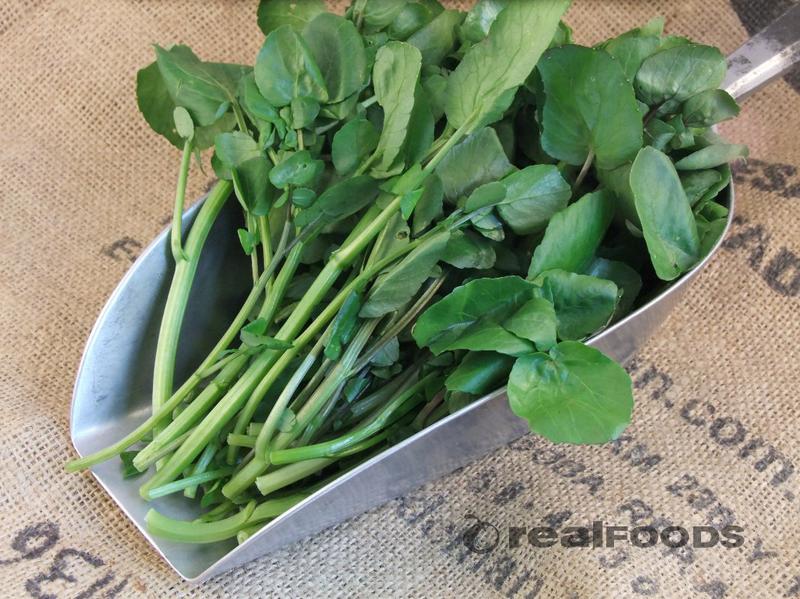
Famed for accompanying egg mayonnaise in sandwiches, cress is a member of the Brassicaceae family, like cabbage and Brussels sprouts. This edible herb has a similarly peppery taste and smell to watercress and mustard but it is also surprisingly nutritious.
Like asparagus, it is a rich source of vitamin C, which supports the immune system, and vitamin K, which is an important nutrient for bone health and blood clotting. Garden cress seeds also have a good balance of omega-3 to omega-6 essential fatty acids.
Cress works well as a garnish for salads and soups and of course in the aforementioned sandwiches. It can also be used as the basis for a delicious pesto if you’ve run out of basil!
Nettles
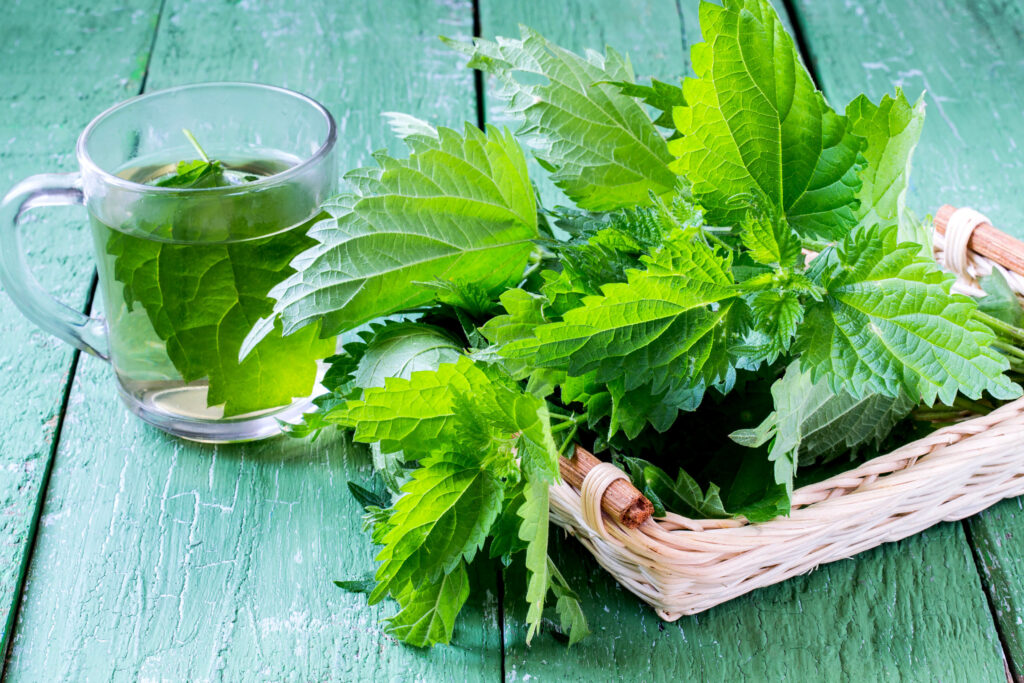
Being stung by them can be a nasty experience, but you may be surprised to learn that nettles are highly nutritious. Nettles are rich in nutrients such as vitamin A, vitamin C, calcium, magnesium, iron and potassium. They are also a good source of protein.
These prickly plants grow in abundance throughout the UK and are best picked between late February and early June. To make them safe for consumption, nettles should be boiled. Not only does this get rid of their sting but it brings out their flavour which is similar to spinach. In the same way as spinach, they reduce in size to about a quarter of their fresh amount when you cook them.
Use nettles to make tea, soup or even beer! This raw vegan nettle superfood pesto recipe can be eaten as a topping on crackers or enjoyed with courgetti (spiralised courgettes).
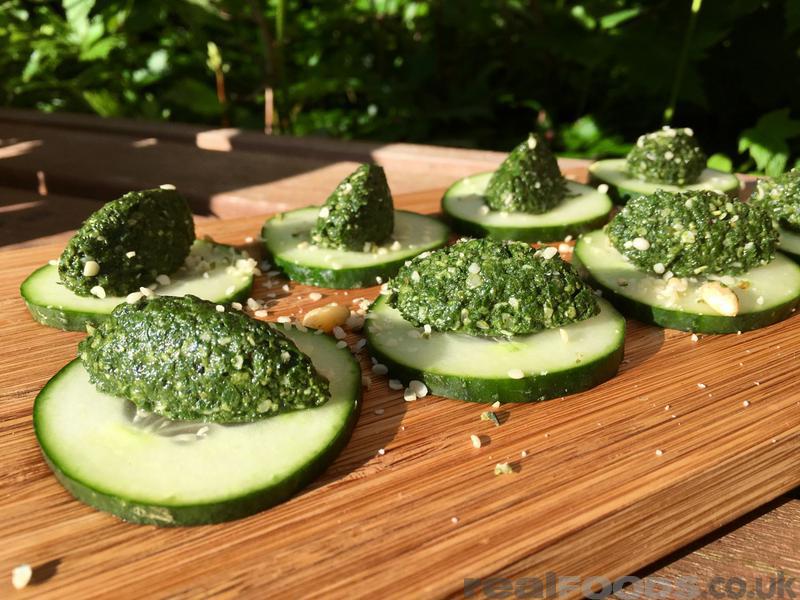
Swiss chard
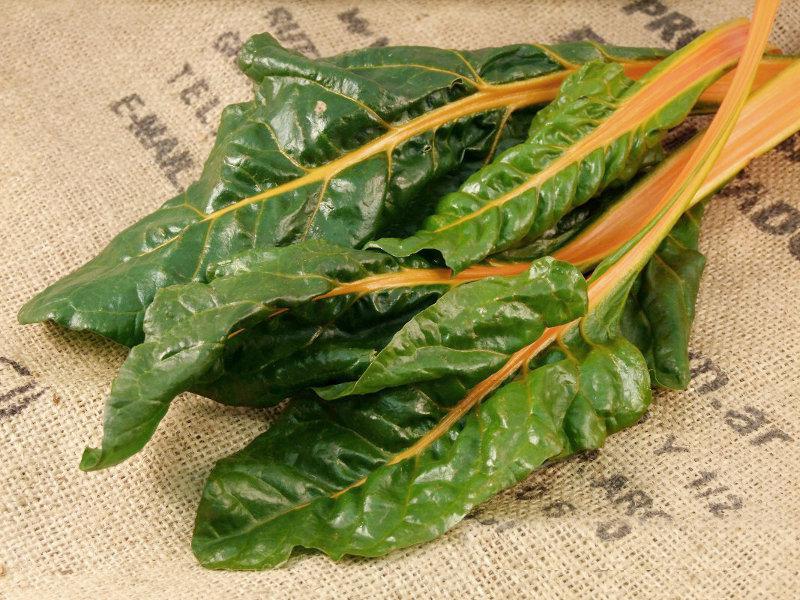
Just like asparagus and cress, Swiss chard is a highly nutritious vegetable that is rich in vitamin K. In fact, one cup of this green leafy vegetable will give you more than three times the recommended daily allowance of vitamin K. Swiss chard is also a great source of vitamin A, vitamin C and magnesium. It’s no wonder that we are told to eat our greens!
Despite its name, Swiss chard is native to the Mediterranean. It is in season all year round but at its best from July to November.
For a simple way to cook Swiss chard, just sauté it in some olive oil with chopped garlic and season it with salt and pepper. Alternatively it can be boiled or steamed. Try adding it to stews, salads and soups or a frittata. Or of course you could simply serve it as a side dish to accompany your main meal.
Runner beans
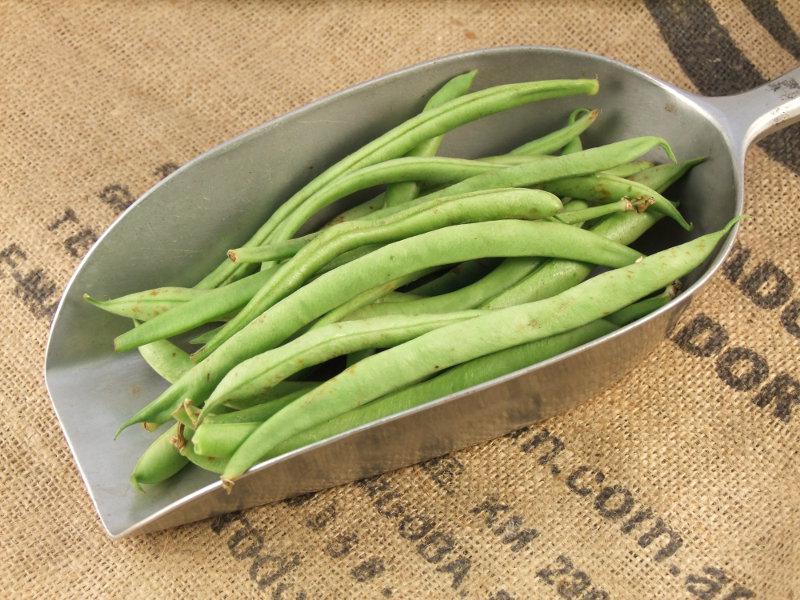
Runner beans are one of the many fresh vegetables you can enjoy during summer. They are native to South America and have been grown there for 2,000 years. They come into season in the UK from June to November.
Runner beans are a great source of vitamins A, C, and K, as well as folic acid and fibre. A cup of raw green beans contains 33 micrograms of folate, which is nearly 10 per cent of the daily recommended value. Folate is particularly important during pregnancy as it helps to prevent birth defects such as spina bifida.
The best way to cook runner beans is to boil them until they are al dente and then they can be served as a side dish to a main meal. Or chop them up and add them to salads, curries, risottos or pasta dishes for a dash of colour. This recipe for garlic runner beans is a great way to liven up a simple side dish.
French beans
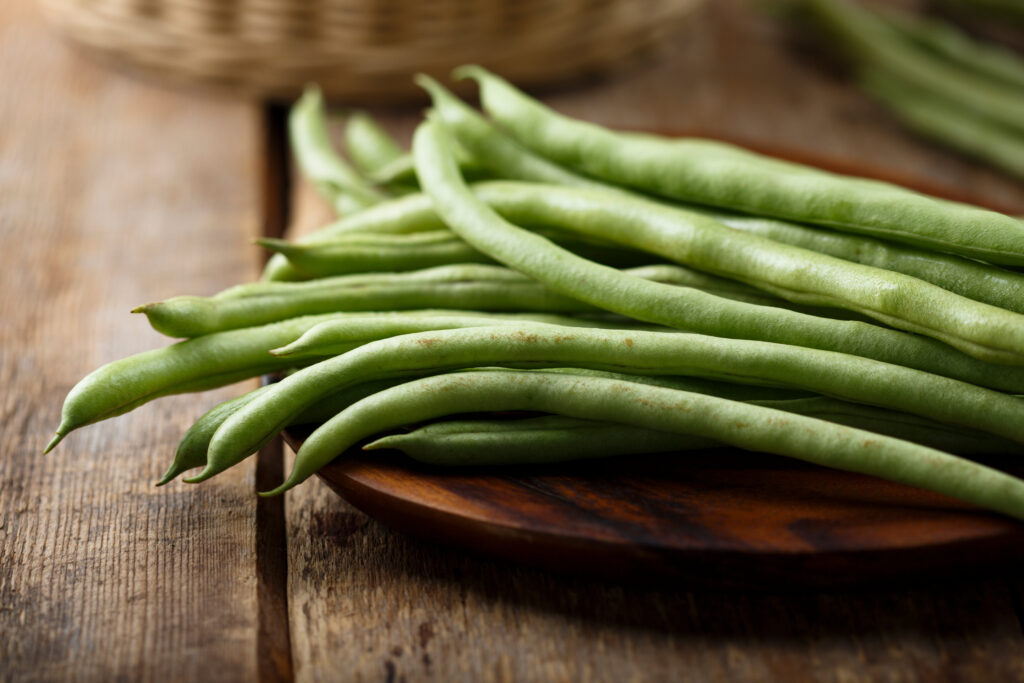
Also known as fine beans or string beans, French beans are a fantastic summer vegetable. They can be eaten raw – great with hummus or a dip – and make excellent finger food for children.
The best way to cook them is to boil or steam them for three to five minutes so that they still have a satisfying crunch. A top tip is to place them in iced water once they are cooked as this will help to retain their vibrant green colour and will prevent them from overcooking. Tossed with some sautéed garlic and butter, French beans make a great side dish.
French beans are a key ingredient of the classic Niçoise salad, which can be made vegetarian with the inclusion of capers instead of anchovies.
They are rich in vitamin C, vitamin K, vitamin A and manganese. They are also a good source of dietary fibre, potassium, folate and iron.
Kohlrabi
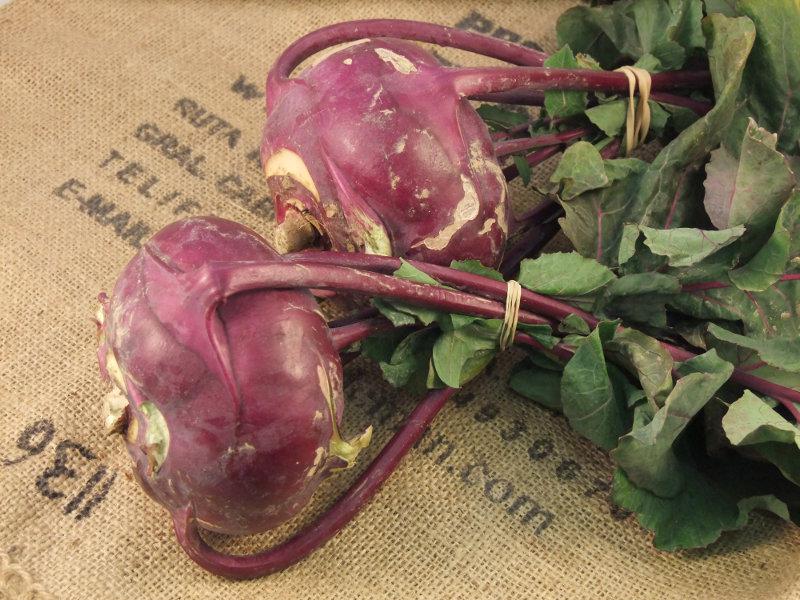
Kohlrabi is part of the cabbage family and, appropriately, the name means ‘turnip cabbage’ in German. It has a mild, sweet flavour and a crunchy texture.
Kohlrabi is particularly rich in vitamin C, making it a good support for the immune system. It is also a good source of vitamin B6 as well as potassium and dietary fibre. Notably, the skin of purple kohlrabi is particularly rich in anthocyanins. These are a type of antioxidant that have been associated with improved cardiovascular health and have been shown to help with dementia.
This bulbous vegetable is pretty versatile and can be steamed, sautéed, roasted or eaten raw. It works particularly well alongside carrot in a slaw. Great for accompanying a summery salad full of fresh vegetables!
Tomatoes
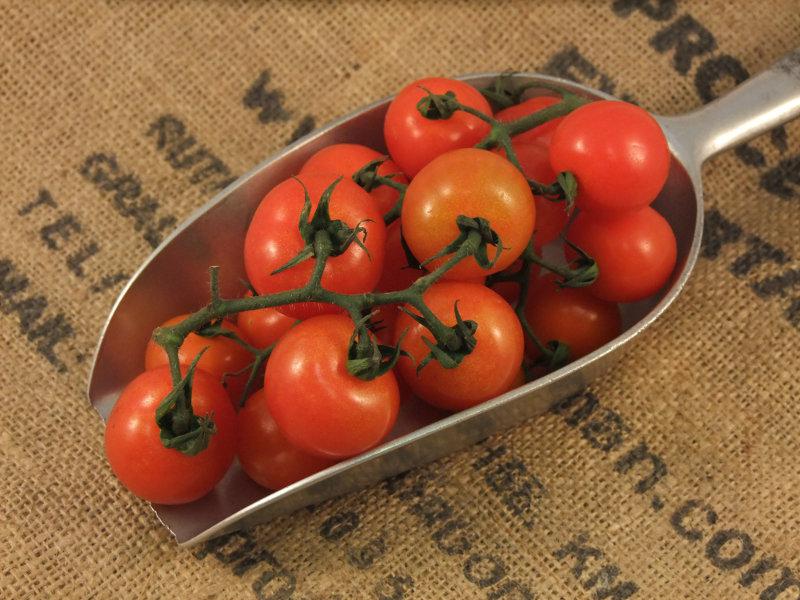
From Heirloom to Roma and Marmande, tomatoes are an essential ingredient in any summer salad and surely one of the tastiest fresh vegetables. Originally from Central and South America, tomatoes are members of the nightshade family and tend to be in season in the UK between June and October.
Tomatoes really are nutrient powerhouses, rich in vitamins A, C and E. They are also a fantastic source of lycopene, helping to protect against cancer, heart disease and other chronic diseases. Tomatoes also contain flavonoids and carotenoids, which are antioxidants that help to support the body’s defences against free radicals.
Tomatoes are another versatile vegetable, as they can be eaten raw, roasted, stewed, sautéed, fried and used to make tomato sauce which forms the basis of so many recipes. This delicious vegan lentil, artichoke and roasted tomato salad recipe makes a simple and nutritious lunch option.
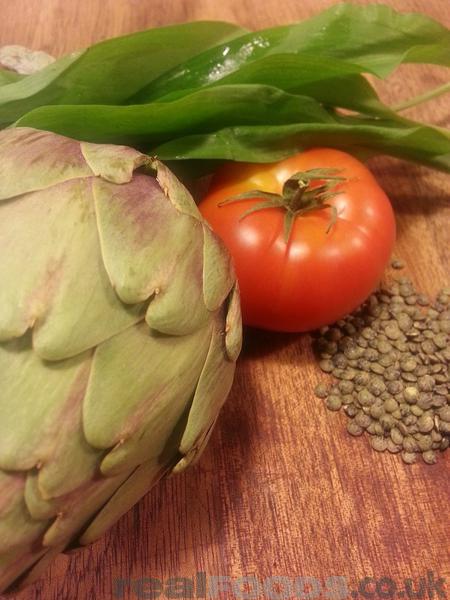
These are just some of the many fresh vegetables that you can enjoy during the spring and summer. Don’t forget that Real Foods stocks all of these and much more!
Shop special offers now
Choose from hundreds of special offers from the brands you love at lower prices you’ll love even more!
